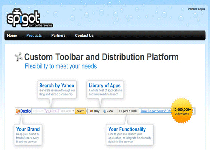Spigot Redirect
Posted: November 23, 2012
Threat Metric
The following fields listed on the Threat Meter containing a specific value, are explained in detail below:
Threat Level: The threat level scale goes from 1 to 10 where 10 is the highest level of severity and 1 is the lowest level of severity. Each specific level is relative to the threat's consistent assessed behaviors collected from SpyHunter's risk assessment model.
Detection Count: The collective number of confirmed and suspected cases of a particular malware threat. The detection count is calculated from infected PCs retrieved from diagnostic and scan log reports generated by SpyHunter.
Volume Count: Similar to the detection count, the Volume Count is specifically based on the number of confirmed and suspected threats infecting systems on a daily basis. High volume counts usually represent a popular threat but may or may not have infected a large number of systems. High detection count threats could lay dormant and have a low volume count. Criteria for Volume Count is relative to a daily detection count.
Trend Path: The Trend Path, utilizing an up arrow, down arrow or equal symbol, represents the level of recent movement of a particular threat. Up arrows represent an increase, down arrows represent a decline and the equal symbol represent no change to a threat's recent movement.
% Impact (Last 7 Days): This demonstrates a 7-day period change in the frequency of a malware threat infecting PCs. The percentage impact correlates directly to the current Trend Path to determine a rise or decline in the percentage.
| Threat Level: | 2/10 |
|---|---|
| Infected PCs: | 81 |
| First Seen: | November 25, 2012 |
|---|---|
| OS(es) Affected: | Windows |
 The Spigot Redirect is a symptom of infection by a Spigot.com-promoting browser hijacker. In most cases, SpywareRemove.com malware researchers have associated Spigot Redirect attacks with custom browser add-ons and toolbars. Although Spigot.com isn't harmful to your computer, add-ons that use Spigot Redirect attacks can be considered malicious due to their unwarranted changes to your browser's settings and their tendencies to update themselves without your permission. If you experience Spigot Redirects or any other form of browser hijack that you feel is related to Spigot.com, suitable anti-malware programs are the quickest and most fail-proof method of stopping Spigot Redirect attacks and removing all associated software safely.
The Spigot Redirect is a symptom of infection by a Spigot.com-promoting browser hijacker. In most cases, SpywareRemove.com malware researchers have associated Spigot Redirect attacks with custom browser add-ons and toolbars. Although Spigot.com isn't harmful to your computer, add-ons that use Spigot Redirect attacks can be considered malicious due to their unwarranted changes to your browser's settings and their tendencies to update themselves without your permission. If you experience Spigot Redirects or any other form of browser hijack that you feel is related to Spigot.com, suitable anti-malware programs are the quickest and most fail-proof method of stopping Spigot Redirect attacks and removing all associated software safely.
How a Spigot Redirect Swaps Around Your Browser's Directions on a Whim
Spigot Redirect attacks can be caused by any type of malware that includes browser-hijacking functions. However, as a custom toolbar site, Spigot.com is strongly associated with browser add-ons that use their search engine features as excuses to use Spigot Redirect attacks. SpywareRemove.com malware analysts have found such attacks to occur in the following cases:
- A Spigot Redirect may trigger when your browser loads a generic web error page (such as a 404).
- Spigot Redirects also may trigger after you use an online search engine or try to load another type of popular search-related site.
- Your homepage and new tab pages may be locked to Spigot.com due to a Spigot Redirect attack.
Some victims of Spigot Redirect attacks also have complained about poor system performance, continual system resource usage from Spigot Redirect-related toolbars, monitored web usage and additional web-based advertisements. The specific attacks that are associated with a Spigot Redirect may vary significantly due to Spigot.com's bent towards churning out large quantities of customizable toolbars.
Why Installing That Unrelated Program Got You a Spigot Redirect
Like most unwanted add-ons, toolbars associated with Spigot Redirect attacks usually are coupled with other applications. Installing freeware programs also may infect your PC with a Spigot Redirect-launching add-on. In some cases, you may be given an option to disable the installation of the Spigot Redirect toolbar. However, SpywareRemove.com malware research team warns that they've also seen cases where a Spigot Redirect-causing toolbar was installed without any permission.
Since Spigot Redirect toolbars try to masquerade as useful programs, they usually will announce their installation. Paying close attention to the installer routines for new programs should allow you to either opt out of a toolbar installation or cancel the entire process. In no circumstances do SpywareRemove.com malware experts recommend that you tolerate Spigot Redirect attacks, which are dangerous to your web-browsing experience and your PC in general.
Leave a Reply
Please note that we are not able to assist with billing and support issues regarding SpyHunter or other products. If you're having issues with SpyHunter, please get in touch with SpyHunter customer support through your SpyHunter . If you have SpyHunter billing questions, we recommend you check the Billing FAQ. For general suggestions or feedback, contact us.